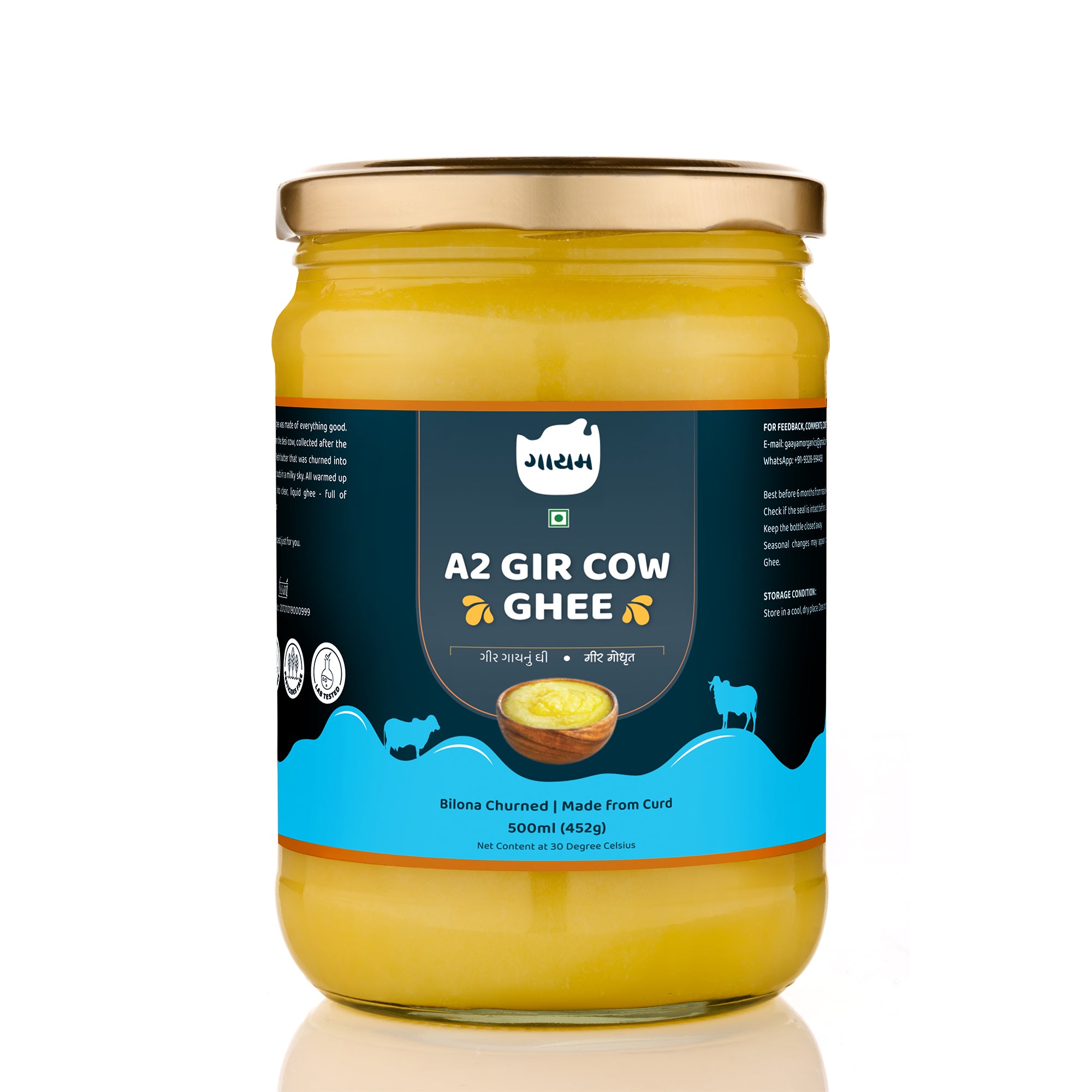
The Art of Making A2 Bilona Ghee
For centuries, bilona ghee has been produced and consumed in India. However, while the traditional method of making this aromatic elixir was slow and elaborate, requiring great manual time and effort, the modern method is quick and mechanized. But the nutritional value of ghee is largely lost in the modern process.
So, what is the traditional method and why are people going back to it? Here you will find out more about the traditional method or the Bilona method of making ghee and why is it superior to your regular processed ghee.
What is Bilona Ghee?
Bilona method owes its name to the wooden beater i.e., “Bilona” which has been used since ancient times for churning out butter from the curd. You may be having a smaller version at your home or may have seen your grandma using one to make mango shakes and lassi.
Nowadays we have the facility of a food processor or a mixie. Yes, the mixie makes the lassi faster than your grandma, but wasn’t grandma’s version tastier, having more fiber and nourishment? Similar is the case with ghee too.
The old method gives the real desi ghee (according to Ayurveda), which is much superior to normally processed ghee in taste, aroma, and nutrition. All Shahji Desi ghee is produced using the Vedic bilona method.
4 Steps of Process of Making Bilona Ghee
Stage 1: Boiling A2 Milk
First milk is collected from cows or buffaloes and the milk is boiled. This is done because milk was fresh and raw, and may be having impurities. Then this milk is allowed to cool till it has just enough warmth for making curd.
Stage 2: Putting Curd in milk
When milk is cooled down to curd making temperature, the whole of it including the malai (that is creamy layer) is poured into earthen pots. To convert the milk into curd, a spoonful of curd or curd starter called jamawan is added to it. Overnight the milk turns into curd.
Stage 3: Churning of Curd
Now comes to the actual Bilona Stage. The curd formed in earthen pots is poured in a bigger earthen or wooden pot in which we have the wooden Bilona with rope wrapped around it and the free ends are handheld to make the bilona turn back and forth in order to churn the curd clock-wise and anti-clockwise so as to make butter. The Bilona goes on churning out butter from the curd, which is scooped out leaving the buttermilk or whey.
Stage 4: Separate Makkhan and buttermilk
In the last stage, butter is transferred into another pot and heated to make Ghee. Since the Vedic ages wood was used to make a fire for slowly heating up the butter to make the milk solids separate from ghee.
The Bilona ghee method essentially requires heating on a low flame and the clarification process is long. In the end, the milk solids turn reddish brown and settle at the bottom. Clear bilona ghee is afloat above.
Noteworthy is the fact that more cow milk than buffalo milk is taken up to make the same amount of ghee. Also, the amount required in the commercial method is almost half to make - say a liter of Ghee in the traditional method. Despite the cost and manual effort involved in the Bilona method, the nutrition is preserved and the same is lost in the commercial method.
The commercial or industrial method makes ghee mostly either by the cream of milk (Malai) or through butter from motor churned raw milk of grain or grass-fed jersey cows or buffaloes. This is because the demand for bilona ghee is constantly increasing. Desi cow breeds like Gir and Sahiwal don’t give as much milk as do hybrid cows as buffaloes.
